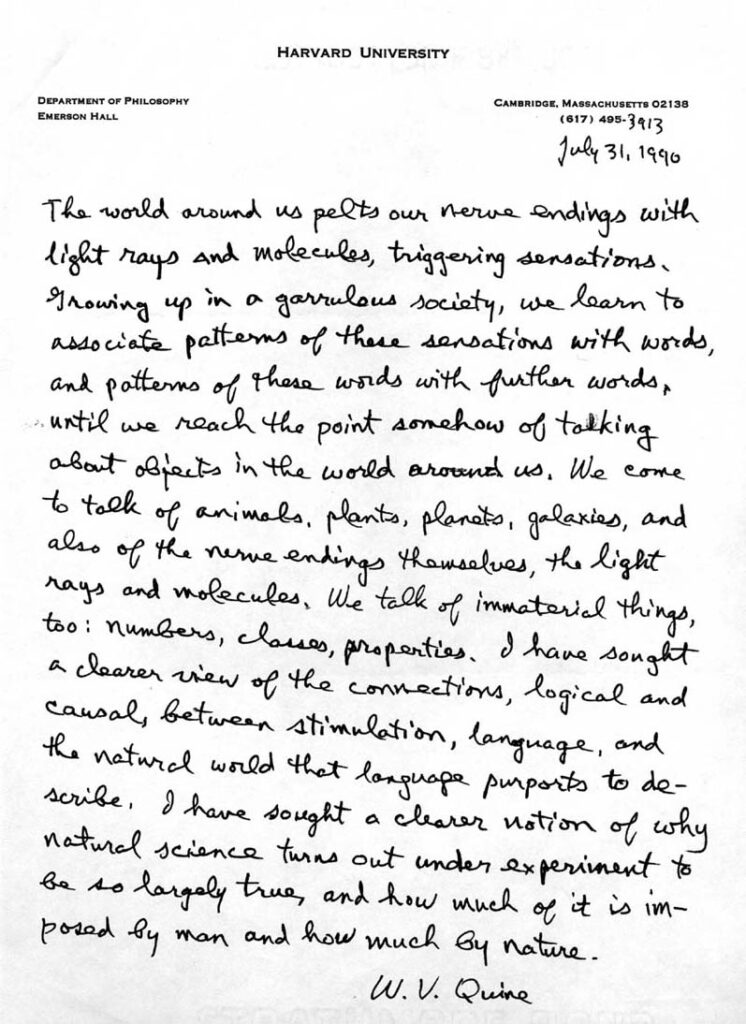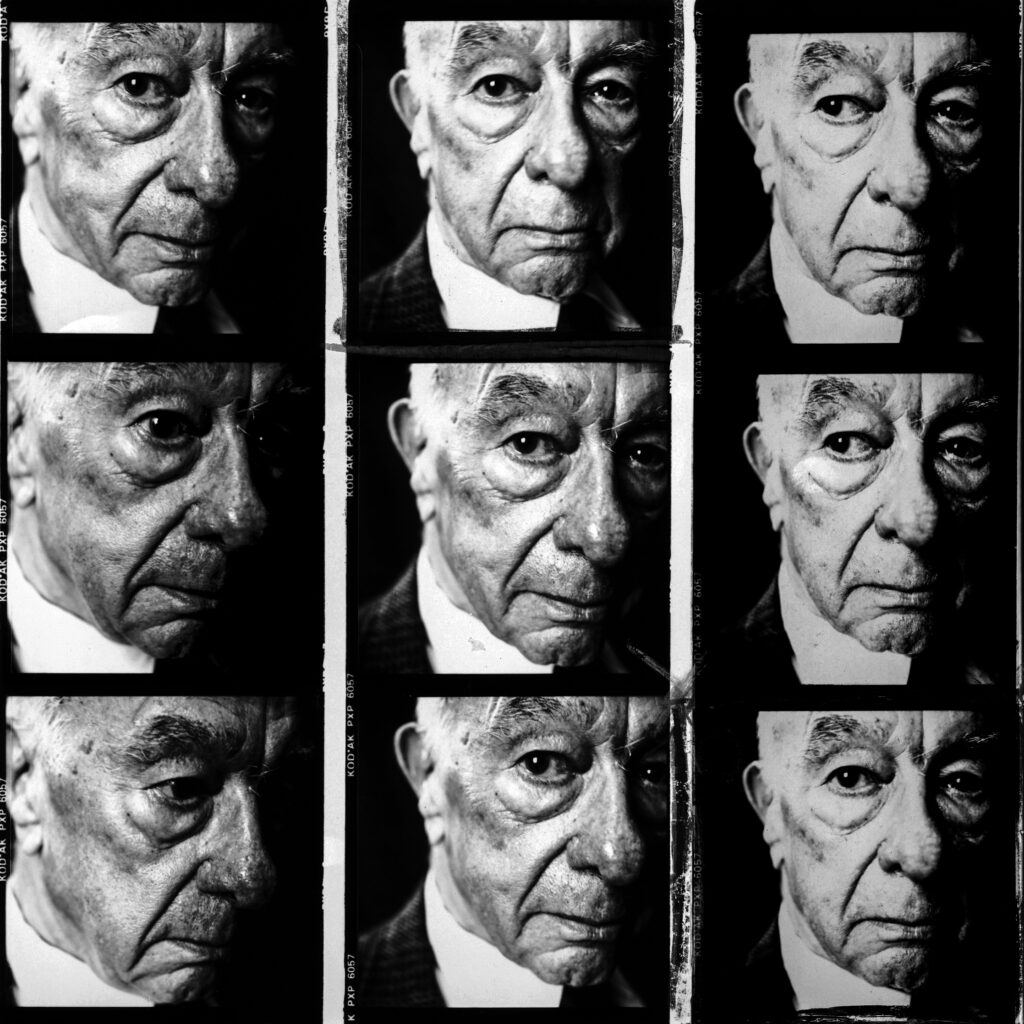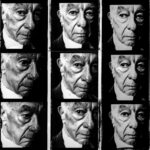
Steve Pyke has made a habit of collecting philosophers.
Starting in the 1980s, the renowned photographer Steve Pyke shot an influential series of portraits of philosophers, including major figures of the day: Jacques Derrida, Iris Murdoch, John Rawls, and even a young Martha Nussbaum. He followed this up with a second series, shot during the 1990s and 2000s, adding more prominent philosophers to the growing collection: Anthony Appiah, David Chalmers, Sally Haslanger, Peter Singer, and Slavoj Žižek. Each series was made into a book.
The philosophers were each asked to compose an accompanying statement, an answer to the question: What does philosophy mean to you? Pyke tried to keep answers to fifty words, but many philosophers responding ran well over that.
One philosopher included in the first series was Willard Van Orman Quine, author of Word and Object, among many other influential books and essays.
The pages from Pyke’s book bearing Quine’s portrait and reflection are available to view on his website. What hasn’t been available to view before, either in the books or on Pyke’s website, are these relics of the process: a handwritten letter where Quine considers the meaning of philosophy, and Pyke’s contact sheet from their portrait session. (A contact sheet is a kind of intermediate photographic artifact, designed to compare images more clearly than squinting at negatives.)

The letter reads:
The world around us pelts our nerve endings with light rays and molecules, triggering sensations. Growing up in a garrulous society, we learn to associate patterns of these sensations with words, and patterns of these words with further words, until we reach the point somehow of talking about objects in the world around us. We come to talk of animals, plants, planets, galaxies, and also of the nerve endings themselves, the light rays and molecules. We talk of immaterial things, too: numbers, classes, properties. I have sought a clearer view of the connections, logical and causal, between stimulation, language, and the natural world that language purports to describe. I have sought a clearer notion of why natural science turns out under experiment to be so largely true, and how much of it is imposed by man and how much by nature.
W.V. Quine
There’s much to say about the content, both in itself and as a summation of Quine’s perspective. But we can also look at it as an aesthetic object: its tactility, the texture and weight, the handwriting style and visual layout, the way the ink moves and bleeds (or not). Appraising the letter in this way, Steve Pyke told me, “It’s amazing. It’s completely seamless, no paragraphs, one long piece of writing in India ink on a beautiful piece of Harvard stationery paper.”
Pyke’s portraits and archival materials help us get outside of these philosophers’ heads and ideas and understand them as physical presences in the world. In an upcoming interview with Aesthetics for Birds, he discusses the process of making the portraits, sharing more never-before-seen archival photographs and behind-the-scenes facts that they hint at, and reflects on his relationship to philosophers. Keep an eye out; you won’t want to miss it.


